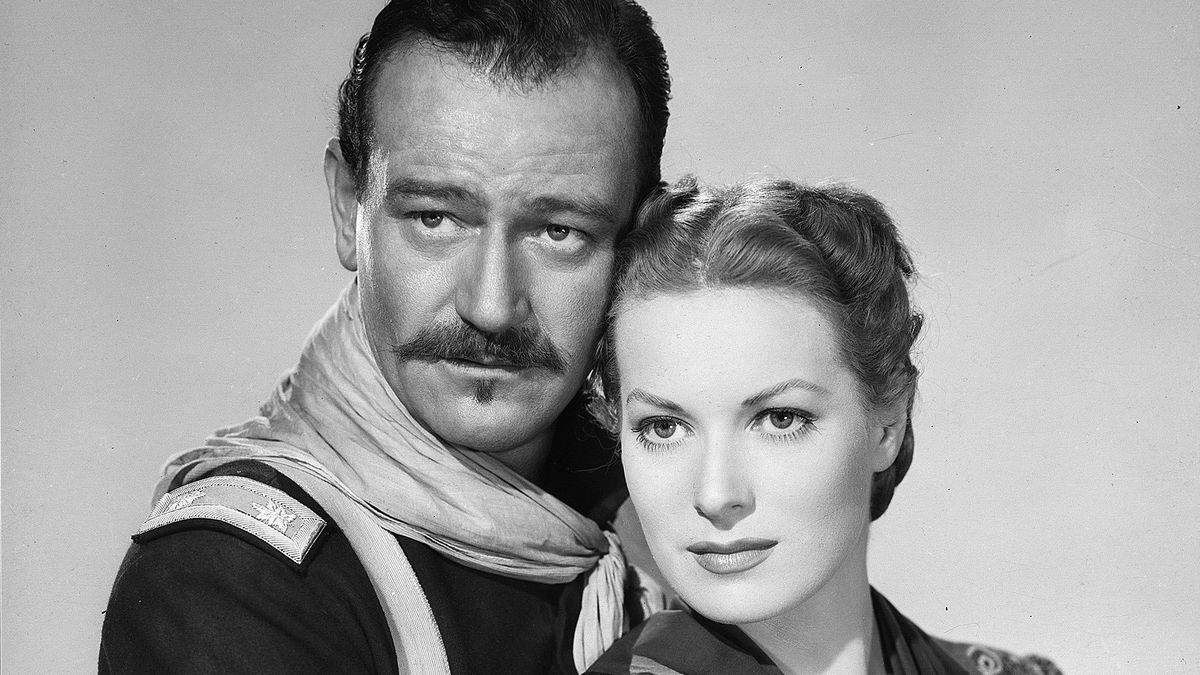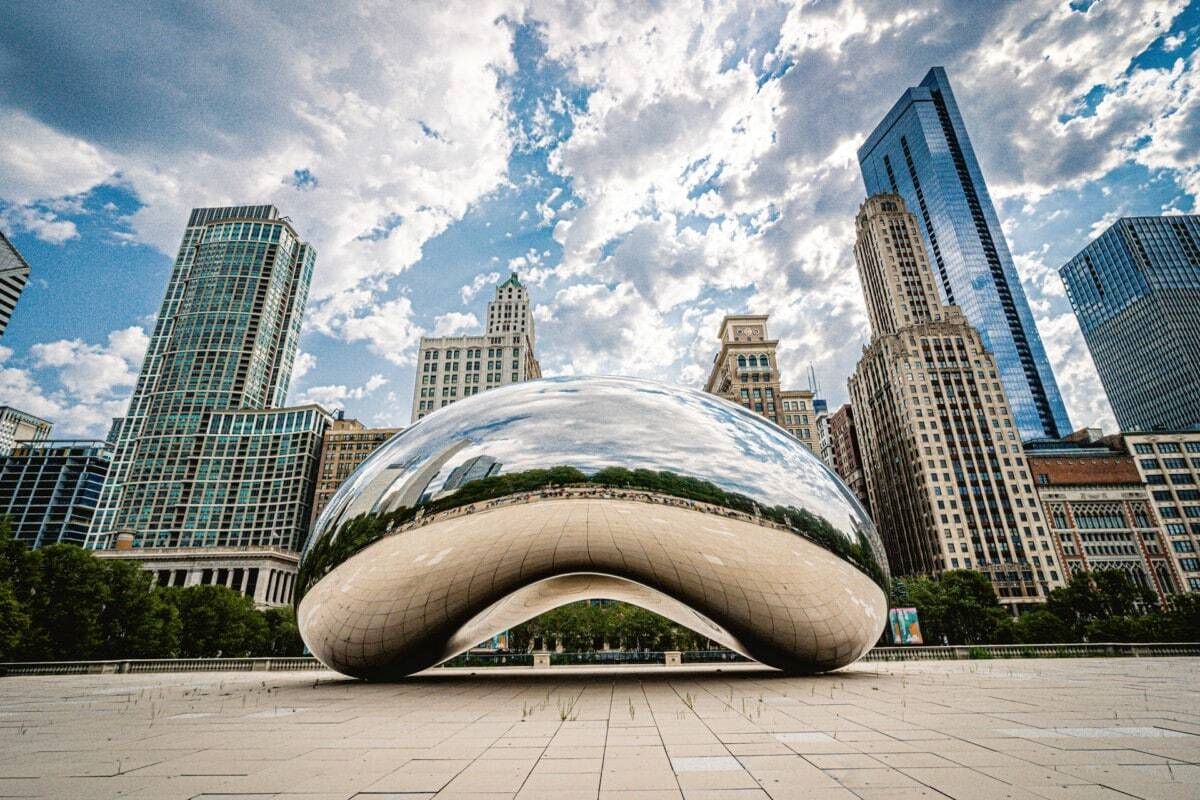
Welcome movie enthusiasts! Get ready to embark on an exciting journey filled with 47 fascinating facts about the beloved film, Rio Grande. Directed by the legendary John Ford and released in 1950, this Western masterpiece has captivated audiences for decades with its gripping storyline, stunning cinematography, and unforgettable performances. Starring the iconic duo, John Wayne and Maureen O’Hara, Rio Grande takes us on a thrilling ride through the rugged landscape of the Texas-Mexico border during the aftermath of the Civil War. From its historical context to behind-the-scenes anecdotes, we’ll explore the untold stories and hidden gems that make Rio Grande a true cinematic gem. So, grab your popcorn and saddle up as we dive into the fascinating world of Rio Grande!
Key Takeaways:
- Rio Grande” is a classic Western film directed by John Ford and starring John Wayne, exploring themes of duty, sacrifice, and the complexities of military life in the American frontier.
- The movie’s enduring popularity is a testament to its timeless appeal, captivating storytelling, and iconic performances, making it a must-watch for fans of the Western genre.
The movie Rio Grande was released in 1950 and is directed by John Ford.
Rio Grande is a Western film that tells the story of a Union cavalry officer who must balance his duty to protect settlers from Native American attacks with his personal struggles.
The movie stars John Wayne as Lieutenant Colonel Kirby Yorke, a dedicated officer in the United States Army.
John Wayne’s performance in Rio Grande is often regarded as one of his best in a Western film.
Rio Grande is the third installment in the “Cavalry Trilogy” by John Ford, following Fort Apache and She Wore a Yellow Ribbon.
These three films are thematically connected and depict the challenges faced by the US Cavalry during the Indian Wars.
The film received mixed reviews upon its release but has since gained a cult following and is considered a classic Western.
Many critics praised the film’s stunning cinematography and John Wayne’s commanding performance.
Rio Grande features Maureen O’Hara as Kathleen Yorke, the estranged wife of Colonel Kirby Yorke.
O’Hara’s strong and independent portrayal of Kathleen adds depth to the film’s narrative.
The movie was primarily shot on location in Moab, Utah, which provided the breathtaking backdrop of the American West.
The stunning landscapes captured in Rio Grande contribute to the film’s authentic Western atmosphere.
Rio Grande explores the complex relationship between the US Army and the Native Americans during the 19th century.
The film portrays the tensions and misunderstandings that often led to conflict between these two groups.
The musical score of Rio Grande is composed by Victor Young and features traditional Western-style melodies.
The music perfectly complements the action and emotion portrayed on screen.
The movie highlights the importance of family and sacrifice, as Colonel Yorke must make difficult decisions to protect his men and loved ones.
This theme resonates throughout the film, adding depth and emotional resonance to the story.
Rio Grande showcases the ruggedness and bravery of the US Cavalry soldiers as they face dangerous challenges in the untamed frontier.
The intense action sequences and realistic portrayal of military tactics contribute to the film’s authenticity.
The film expertly balances suspenseful moments with heartfelt scenes, creating a compelling and engaging narrative.
This combination of action and emotion keeps viewers invested in the story and characters.
Rio Grande features a talented supporting cast, including Ben Johnson, Harry Carey Jr., and Victor McLaglen.
Their performances add depth and authenticity to the film’s ensemble cast.
John Ford’s signature directing style is evident in Rio Grande, with his use of wide shots and panoramic landscapes.
These techniques enhance the epic feel of the film and contribute to its visual appeal.
The movie explores themes of honor, duty, and redemption, which are recurrent themes in John Ford’s works.
Rio Grande’s exploration of these themes adds a layer of complexity to the story and characters.
The film incorporates elements of Native American culture, showcasing their traditions, beliefs, and struggles.
This representation adds a more nuanced perspective to the portrayal of Native Americans in Western films.
Rio Grande’s runtime is approximately 105 minutes, providing a concise yet impactful storytelling experience.
The film’s pacing ensures that there are no dull moments and keeps the audience engaged throughout.
The movie’s screenplay is written by James Kevin McGuinness and is based on a short story by James Warner Bellah.
The script effectively captures the essence of the Western genre while exploring deeper themes.
Rio Grande was not initially a commercial success but has since gained a strong following among Western film enthusiasts.
The film’s enduring popularity speaks to its timeless appeal and quality.
The action sequences in Rio Grande are expertly choreographed and keep the audience on the edge of their seats.
These thrilling moments contribute to the film’s overall excitement and adrenaline.
The movie’s dialogue is sharp and memorable, with quotable lines that have become iconic in the Western genre.
The strong writing adds depth to the characters and enhances the film’s overall impact.
Rio Grande was nominated for the prestigious Golden Lion award at the Venice Film Festival.
This recognition further solidifies the film’s status as a significant contribution to cinema.
The film explores the sacrifices made by military personnel and their families in service to their country.
Rio Grande sheds light on the personal toll of war and the resilience of those involved.
The cinematography in Rio Grande is visually stunning, capturing the beauty and harshness of the Western landscape.
The breathtaking vistas serve as a backdrop for the characters’ journey.
Rio Grande showcases the camaraderie and loyalty among the soldiers, emphasizing the bonds formed in difficult times.
This portrayal of military brotherhood adds emotional depth to the film.
The movie explores the themes of forgiveness and reconciliation, as Colonel Yorke and his wife navigate their troubled relationship.
These themes resonate with audiences and add a layer of humanity to the story.
Rio Grande is a testament to John Ford’s expertise in the Western genre, showcasing his ability to tell compelling stories set in the American West.
His directorial vision is evident in every frame of the film.
The film celebrates the spirit of the American frontier and the resilience of those who ventured into the unknown.
Rio Grande captures the essence of the Western genre and its exploration of the American identity.
The movie’s title, “Rio Grande,” refers to the real-life river that forms part of the border between the United States and Mexico.
This geographical reference adds authenticity to the film’s setting.
Rio Grande depicts the challenges of maintaining peace in a volatile and divided landscape.
The film’s exploration of political tensions adds depth to its narrative.
The movie’s narrative unfolds against a backdrop of historical events, including the aftermath of the American Civil War.
Rio Grande provides a glimpse into this turbulent period in American history.
The film incorporates elements of romance, as Colonel Yorke tries to reconcile with his wife while maintaining his military obligations.
This subplot adds emotional depth and complexity to the overall story.
Rio Grande explores the sacrifices made by soldiers and their families while serving in the US Army.
This portrayal highlights the personal toll of military service.
The movie’s editing is seamless, effectively transitioning between action-packed scenes and quiet character moments.
The skillful editing enhances the overall flow of the film.
Rio Grande features breathtaking horseback riding sequences that showcase the skill and agility of the cavalry soldiers.
These scenes add excitement and authenticity to the film’s portrayal of mounted warfare.
The movie’s costume design accurately reflects the fashion of the time period and adds to the authenticity of the film.
The attention to detail in the costumes enhances the visual experience for the audience.
Rio Grande portrays the challenges faced by settlers in the American West, including the constant threat of Native American attacks.
This depiction adds a historical context to the film’s narrative.
The film’s cinematography captures the contrast between the vast open spaces of the frontier and the confined military forts.
This juxtaposition adds visual interest to the film.
Rio Grande explores the concept of duty and the personal sacrifices required to fulfill one’s obligations.
The characters’ sense of duty drives the narrative and adds depth to their actions.
The movie’s screenplay expertly balances moments of levity with darker and more dramatic scenes.
This tonal range adds depth and complexity to the overall story.
Rio Grande showcases the bravery and resilience of Native American warriors, challenging traditional stereotypes prevalent in Western films.
This portrayal adds a more nuanced perspective to the Native American characters.
The film’s theme song, “Rio Grande,” sung by the Sons of the Pioneers, has become a Western film classic.
The iconic song further contributes to the film’s lasting impact.
Rio Grande explores the moral gray areas of war, depicting the personal conflicts faced by soldiers caught between duty and compassion.
This exploration of the ethical dilemmas adds depth to the film’s narrative.
The characterization in Rio Grande is multi-dimensional, with each character having their motivations and personal struggles.
This complexity adds depth and realism to the film’s ensemble cast.
The movie’s resolution provides a satisfying conclusion to the characters’ arcs, tying together the various storylines.
This culmination of events leaves the audience with a sense of closure.
Rio Grande’s legacy is evident in the influence it has had on subsequent Western films.
The movie’s themes, performances, and cinematography continue to inspire filmmakers today.
The film’s success led to John Wayne and John Ford collaborating on many more Western films throughout their careers.
Rio Grande marked the beginning of a fruitful partnership between the actor and director.
Rio Grande remains an important entry in the Western genre, representing the classic themes and elements that define this iconic genre.
The film’s enduring popularity is a testament to its quality and timeless appeal.
Conclusion
In conclusion, Rio Grande is a classic Western film that has captivated audiences for decades. With its stunning cinematography, compelling storyline, and memorable performances, it has secured its place in movie history. The film showcases the talent of its director, John Ford, and the legendary actor, John Wayne. Whether you are a fan of Westerns or simply enjoy a well-crafted film, Rio Grande is definitely worth a watch. Its depiction of the challenges faced by the U.S. Cavalry, the complex relationships between characters, and its exploration of themes such as honor and sacrifice, make it a timeless piece of cinema. So, gather your popcorn and saddle up, because Rio Grande promises an immersive and thrilling viewing experience.
FAQs
Q: When was Rio Grande released?
A: Rio Grande was released on November 15, 1950.
Q: Who directed Rio Grande?
A: Rio Grande was directed by John Ford, a renowned filmmaker known for his contributions to the Western genre.
Q: What is the plot of Rio Grande?
A: The film follows the story of Lieutenant Colonel Kirby Yorke, played by John Wayne, as he leads the U.S. Cavalry in defending a fort along the Rio Grande border against Apache attacks. Yorke also struggles to reestablish a strained relationship with his son, who has enlisted in his unit.
Q: Who stars in Rio Grande?
A: Rio Grande features an all-star cast including John Wayne as Lieutenant Colonel Kirby Yorke, Maureen O’Hara as Kathleen Yorke, and Ben Johnson as Trooper Travis Tyree.
Q: Is Rio Grande based on a true story?
A: While Rio Grande is not based on a specific true story, it draws upon historical events and elements of the Indian Wars that occurred in the American West.
Q: Where was Rio Grande filmed?
A: The majority of Rio Grande was filmed in the iconic Monument Valley, located on the Arizona-Utah border. This location is known for its breathtaking landscapes and has been featured in many Western films.
If you enjoyed learning about Rio Grande, why not explore more fascinating facts about the American West? Discover the intriguing history and culture of the Western Pomo people, or delve into the iconic career of John Wayne, one of the most beloved actors in Western films. For another classic Western movie, check out our article on Fort Apache, directed by the legendary John Ford.
Was this page helpful?
Our commitment to delivering trustworthy and engaging content is at the heart of what we do. Each fact on our site is contributed by real users like you, bringing a wealth of diverse insights and information. To ensure the highest standards of accuracy and reliability, our dedicated editors meticulously review each submission. This process guarantees that the facts we share are not only fascinating but also credible. Trust in our commitment to quality and authenticity as you explore and learn with us.


